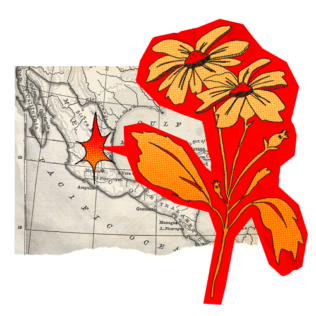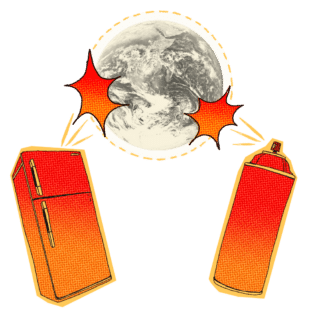Tech Tidbits 3: Hispanic Heritage Month
Hispanic Heritage Month honors the vibrant stories, cultures, and contributions from individuals of Hispanic ancestry. Accompanied with our editorial illustration this year from Rachel Garcera, artist at Western Digital, we celebrate the achievements of three exceptional Latin American scientists who have made a groundbreaking impact in their respective fields of botany, biophysics, and atmospheric chemistry.
Ynés Mexía
“I decided that if I wanted to become better acquainted with the South American Continent the best way would be to make my way right across it.”
Ynés Mexía was a female Mexican American botanist, the first during a time when field work was considered unfeminine and perilous, especially for a woman embarking on her botany career at age 55. Mexía traveled across the Americas for more than a decade, typically on her own, collecting nearly 150,000 specimens, including 500 new species.

Dr. Mario Molina was a Nobel Prize-awarded Mexican physical chemist who uncovered how the release of chlorofluorocarbons (CFCs) into the atmosphere could deplete the ozone layer. Molina and his colleague F. Sherwood Rowland sought to protect the ozone layer, their efforts resulting in the international 1987 treaty Montreal Protocol which, ratified by 197 countries, phased out the use of 99% of CFC emissions across the globe.
Today, scientists are using modern data tools to leverage Mexía’s findings to understand changes in biodiversity due to environmental factors like climate change and habitat reduction. While Mexía collected and mapped ecological relationships by hand, botanists now use techniques including high-resolution imaging, environmental DNA analysis (eDNA), and GPS tagging to catalogue species characteristics, ecosystems, and locations.
Dr. Humberto Fernández-Morán
“In general, we could define scientific research as a subtle but continuous network, stretched over the centuries to pick up the waves of different creative cultural impulses that are emerging in villages.”
Dr. Humberto Fernández-Morán was a Venezuelan biophysical researcher who invented the diamond knife, a supersharp blade that can slice specimens into ultra-thin sections of 50 nanometers (nm)—200,000 times smaller than one centimeter. The ability to use a diamond knife to create precision sectioning helped improve preparation of specimens in electron microscopy and was key in studying lunar samples from Apollo 11 and 12.

Electron microscopy is an incredible tool for capturing high-resolution images and 3D models, allowing scientists to observe structures of molecular and atomic dimensions. It is useful for industries not limited to biomedical research, materials science, and electronics engineering, including the discovery of future materials for emerging memories and magnetic data storage.
Dr. Mario Molina
“The Earth is not in our hands; we are in the Earth’s hands.”
Today, atmospheric chemists and environmental scientists work with advanced data-driven technologies, utilizing vast amounts of data gathered from satellites, weather stations, and remote sensors. A prime example is NVIDIA’s recently announced Earth-2 platform—an AI-powered digital twin of our planet that fuses high-resolution weather and climate datasets to recreate Earth’s systems for interactive exploration. Scientists hope that these new data-based tools will improve our understanding of our planet’s ecosystems and our ability to protect them.

Artwork by Rachel Garcera




